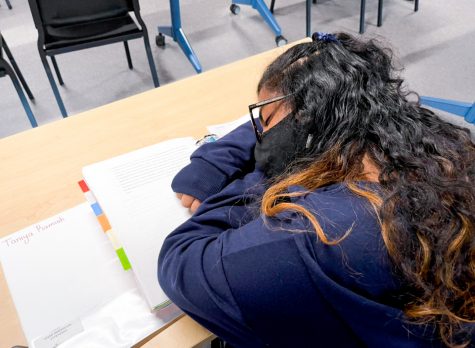DGS’s exhausting new reality
October 23, 2021
Students all across DGS are suffering from one of the most common side effects of COVID-19 collateral; fatigue. Students have essentially lost the motivation to get things done. To some students, it seems to take double the effort to complete a single task.

Students are so used to learning in the comfort of their own homes; they’re not used to the discomfort of being submerged in a classroom. Due to the rules pertaining to homework loads being more lenient last year, the student body is not acclimated to a faster-paced classroom.
Senior Jo Stewart elaborated on how physically and mentally draining coming back to school in-person is for them.
“Coming back to school after COVID has definitely been difficult because my body isn’t used to doing so much at one time. I feel like I’m not only physically drained but also mentally because I’m interacting with people so much more,” Stewart said.
This problem isn’t just chalked up to pure laziness, however that occasionally may be the case. The problem is much deeper than that; the year-long lockdown has rewired all of our brains. According to a study done by the Kaiser Family Foundation, COVID has caused a 30% increase in mental illnesses such as depression and anxiety.
This increase makes the fast-paced school environment nearly impossible. Mental health counselor Taylor Quinn noticed the increasing trend of mental illness in regards to life after COVID.
“I’ve noticed that people are experiencing more anxiety and depression in regard to expectations that are being placed on them, as it feels like the expectations are unrealistically too high but are unaddressed as being such,” Quinn said.
Now with students being shoved back into whatever form of normalcy this is, their brains didn’t get time to heal or catch up. The question people want to know– is it possible to rebound, and if so, at what cost?